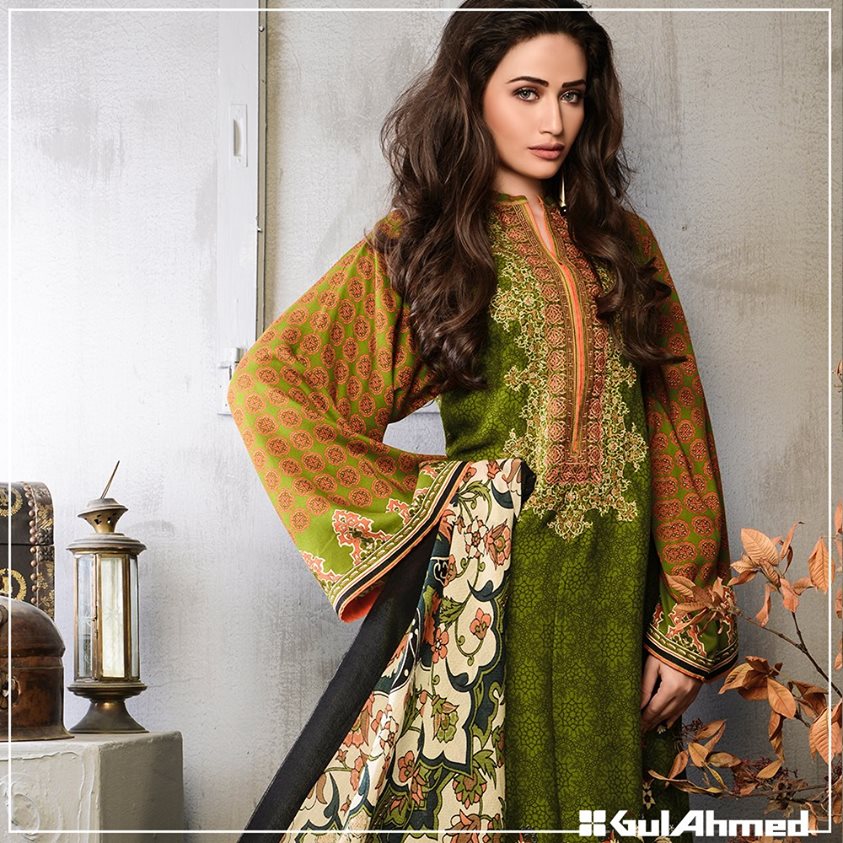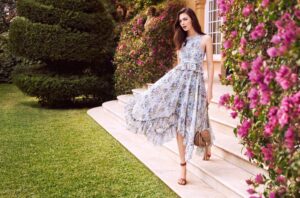Pakistan is a country renowned for its rich culture, traditions, and vibrant fashion industry. Women’s clothing in Pakistan embodies a unique blend of traditional and modern styles, catering to diverse preferences and occasions. From elegant shalwar kameez sets to luxurious bridal attire, Pakistani women have a plethora of clothing options that reflect their heritage, modesty, and evolving fashion sense. In this comprehensive article, we will explore the various types of women’s clothes in Pakistan, their cultural significance, popular fabrics, and contemporary trends.
Traditional Clothing for Women in Pakistan
Shalwar Kameez
The shalwar kameez is the national dress of Pakistan and remains one of the most popular and versatile outfits for women. It consists of a long tunic (kameez) paired with loose-fitting trousers (shalwar) and is often accompanied by a dupatta (scarf). Shalwar kameez designs vary depending on regional influences, fabric choices, and embellishments.
Regional Variations:
- Punjab: Vibrant colors, floral prints, and intricate embroidery are common.
- Sindh: Ajrak and mirror work are distinctive features.
- Khyber Pakhtunkhwa: Simpler patterns with a focus on comfort.
- Balochistan: Heavily embroidered pieces with bold patterns.
Saree
The saree is a graceful and elegant attire often worn on special occasions. Though traditionally associated with India, it has a strong presence in Pakistan as well, particularly among women in urban areas and for formal events.
Key Features:
- Made from fabrics like silk, chiffon, and georgette.
- Adorned with embroidery, sequins, and beadwork.
- Paired with a fitted blouse and petticoat.
Lehenga Choli
The lehenga choli is a popular choice for weddings and festive celebrations. It consists of a long, flared skirt (lehenga) paired with a fitted blouse (choli) and a dupatta.
Design Elements:
- Heavy embellishments, intricate embroidery, and vibrant colors.
- Often crafted from luxurious fabrics like silk, velvet, and organza.
Gharara and Sharara
These traditional outfits have made a significant comeback in recent years. Ghararas and shararas are characterized by their wide-legged trousers paired with a short or long kurta and a dupatta.
Cultural Significance:
- Historically worn by Mughal-era women.
- Popular for weddings and cultural events.
Modern Clothing Trends
As Pakistani women increasingly embrace modern fashion trends, contemporary clothing styles have become more prevalent.
Western Wear
Urban women in Pakistan often incorporate Western wear into their wardrobes. Popular options include:
- Jeans and tops
- Blazers and trousers
- Casual dresses and jumpsuits
Fusion Wear
Fusion wear blends traditional and modern elements to create unique and stylish outfits.
- Kurta dresses with jeans
- Shalwar kameez with modern cuts
- Dupatta-inspired scarves with Western outfits
Abayas and Hijabs
Modest fashion is an essential part of women’s clothing in Pakistan. Abayas and hijabs come in various styles, colors, and fabrics, catering to the growing demand for fashionable modest wear.
Fabrics and Embellishments
Pakistani women’s clothing is characterized by the use of high-quality fabrics and intricate embellishments. Some popular fabric choices include:
- Cotton: Ideal for everyday wear due to its comfort and breathability.
- Lawn: A lightweight and soft fabric perfect for the summer season.
- Silk: Luxurious and elegant, often used for formal wear.
- Chiffon: Delicate and flowy, ideal for evening wear.
- Velvet: Rich and opulent, perfect for winter occasions.
- Organza: Sheer and lightweight, often used for festive attire.
Common Embellishments:
- Embroidery: Hand and machine embroidery add intricate details.
- Mirror Work: A traditional embellishment popular in Sindh and Balochistan.
- Sequins and Beadwork: Add sparkle and glamour to outfits.
- Zari and Zardozi: Gold and silver threadwork for a regal look.
Seasonal Collections
Pakistani fashion designers release seasonal collections that cater to the changing weather and fashion preferences.
Spring/Summer Collection
- Light and breathable fabrics like lawn and cotton.
- Floral prints and pastel colors.
- Minimalist designs with subtle embroidery.
Fall/Winter Collection
- Warm fabrics like velvet, wool, and karandi.
- Dark and rich color palettes.
- Heavier embellishments and layering options.
Bridal and Formal Wear
Pakistani bridal and formal wear are renowned for their grandeur and craftsmanship. Bridal outfits often feature intricate embroidery, heavy embellishments, and luxurious fabrics.
Popular Bridal Styles:
- Red Lehenga: A timeless choice for brides.
- Pastel Ensembles: Modern brides often opt for soft hues.
- Traditional Ghararas: Elegant and regal for nikkah ceremonies.
Formal Wear for Events:
- Anarkali dresses
- Floor-length gowns
- Heavily embroidered shalwar kameez
Popular Pakistani Designers and Brands
The Pakistani fashion industry boasts numerous talented designers and brands that cater to various fashion preferences and budgets.
Top Designers:
- Hassan Sheheryar Yasin (HSY): Known for luxury bridal and formal wear.
- Maria B: Famous for chic and elegant outfits.
- Sana Safinaz: Pioneers in contemporary fashion.
- Nomi Ansari: Renowned for vibrant and heavily embellished designs.
- Deepak Perwani: A household name in haute couture.
Popular Brands:
- Khaadi
- Gul Ahmed
- Alkaram Studio
- Bonanza Satrangi
- Sapphire
- Nishat Linen
Shopping Destinations
Pakistani women have access to a wide range of shopping options, from traditional markets to modern malls and online platforms.
Traditional Markets:
- Liberty Market (Lahore)
- Tariq Road (Karachi)
- Anarkali Bazaar (Lahore)
- Raja Bazaar (Rawalpindi)
Modern Malls:
- Emporium Mall (Lahore)
- Dolmen Mall (Karachi)
- Centaurus Mall (Islamabad)
Online Shopping:
- Daraz.pk
- Gul Ahmed’s official website
- Khaadi’s online store
Cultural Significance and Festivals
Women’s clothing in Pakistan plays a vital role during cultural events and festivals.
Eid Celebrations:
- Women dress in vibrant and beautifully embellished outfits.
- Shalwar kameez, lehengas, and sarees are popular choices.
Wedding Season:
- Elaborate dresses with heavy embroidery are a must.
- Bright colors and luxurious fabrics dominate bridal wear.
Religious and Cultural Events:
- Modest and elegant attire is preferred.
Conclusion
Women’s clothing in Pakistan is a beautiful reflection of the country’s rich cultural heritage and evolving fashion landscape. From traditional shalwar kameez sets to contemporary fusion wear, Pakistani women have an array of choices that cater to their diverse preferences and lifestyles. With talented designers, high-quality fabrics, and a deep-rooted appreciation for craftsmanship, Pakistan’s fashion industry continues to thrive and make its mark on the global stage. Whether you’re exploring local markets or browsing online stores, the world of Pakistani women’s clothing offers something unique and stylish for every occasion.






